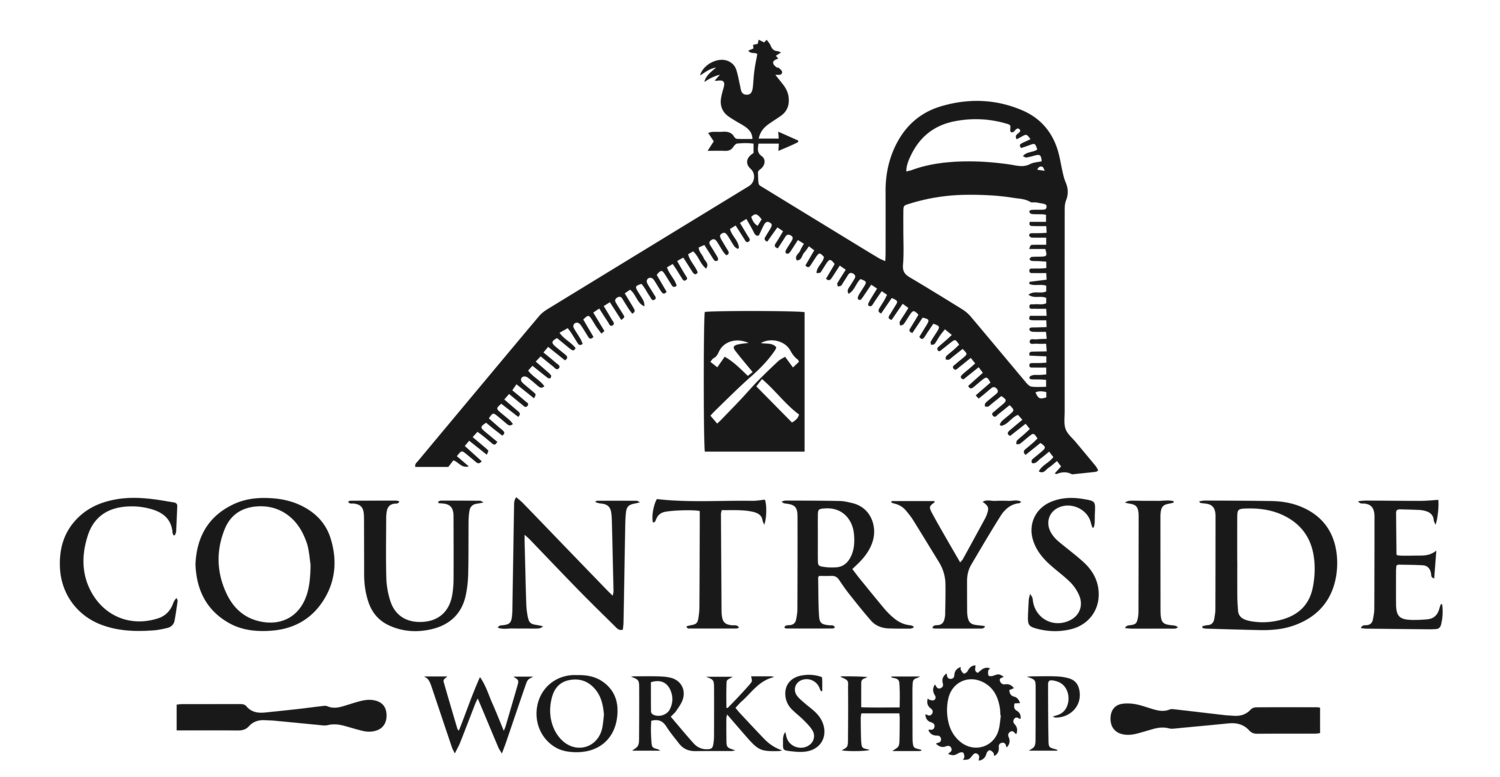When I moved into my shop 2 years ago I needed a quick storage solution. I sold all my shop cabinets before I left Texas because I didn’t want to move them. I found a cabinet shop that was replacing cabinets in a school so they had several 8’ sections of upper and lower cabinets with a countertop. I was able to snag a full section for around $200. The counter top wasn’t ideal because it had a sink in it on one end which prevented me from using about 2’ of it. I wasn’t super picky because of the price. Fast forward 2 years and this space became the biggest problem area in my shop. It was a collect all and everything ended up just sitting on top. The cabinets sat about 2 1/2’ from the corner wall which gave me the perfect opportunity to extend the top and create a desk area for work. I decided to use a torsion box style top because over the course of time it will remain dead flat.
1: Time to declutter and remove everything off the counter so it can be removed. As I did this I realized how much junk I had and now much was actually garbage. It’s amazing what a little spring or fall cleaning can do.
2: Remove your current counter top. If you are like me then you never fastened it down so it is as easy as just picking it up and moving it.
3. Once the counter top is removed I measured for my cleats that would hold the desk portion of the new counter top. It is important to make sure you get these secured to a stud. You can use a stud finder to find the studs then fasten with 2” Spax wood screws.
4: Build the torsion assembly from the top layer down. I have the top piece of 1/2” purebond plywood flipped over with the show surface down. I align the long cleat with the front of the frame with the front of the plywood. I leave about a 1” gap on either end to allow easier scribing to the wall. I attach the cleat to the plywood with 1” pin nails and glue.
5. Attach the back cleat the same as the front cleat except use a spacer to keep it off the wall about ¾” to again leave room to scribe against the wall.
6. Once both front and back supports are attached, use good and pin nails to secure all the cross supports. I placed one on each end, 1 crossing the plywood joint, and about 6 more spaced out down the counter top.
7. In order to have an effective torsion assembly you need to have a second layer of plywood to fully enclose it. I attached it with glue and pins much like I did with the first layer of plywood. I cut this piece ¼” shorter in width than the first layer to prevent cutting through both pieces when scribing.
8. I am using the Fastcap Accuscribe here but you can use a washer and pencil to go the same thing. I am tracing along the wall to get the line that I need to cut with a jig saw. This will allow the counter top to follow the contours of the wall.
9. Attach the face frame using 1¼” brad nails and wood glue. The face frame is made out of 1x2 poplar.
10. Fill all nail holes with timbermate wood filler and sand up to 220.
11. Finish with whatever finish you have around your shop and then add much needed organization with Wall Control Pegboard.
And that's it! Go enjoy your hard work and show it off. Now that you know how to build a torsion box assembly you can go build one for any surface in your shop that needs to remain dead flat. It is simple enough to customize to each application.
Teach People, Inspire Creators, Learn the Craft
Related Articles...


















